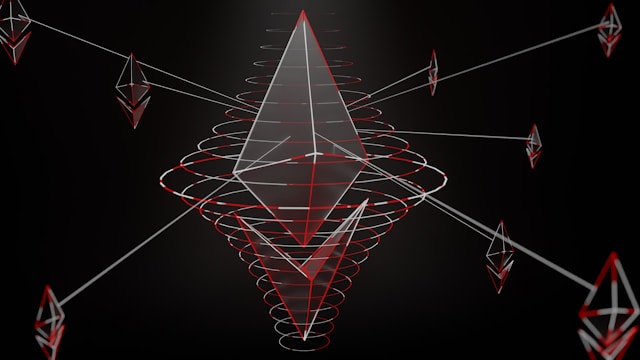In an increasingly digital world, securing financial transactions has become a top priority. As global economies shift toward decentralization and automation, blockchain technology is emerging as one of the most robust solutions for transaction security. Whether it’s used in banking, forex trading, or personal finance, blockchain enhances transparency, reduces fraud, and fortifies trust between parties. For both the seasoned FBS trader and the everyday consumer, understanding blockchain’s benefits is key to navigating the financial landscape safely.
What Is Blockchain?
At its core, blockchain is a distributed ledger technology (DLT). Rather than relying on a central authority, it stores data across multiple nodes, ensuring that once a transaction is verified and added, it cannot be altered retroactively without consensus from the network.
Key characteristics include:
- Decentralization: No single point of failure or control
- Immutability: Data, once recorded, cannot be tampered with
- Transparency: Transactions are visible to all network participants
- Cryptographic Security: Advanced encryption ensures authenticity
How Blockchain Improves Financial Transaction Security
Here are some of the most impactful ways blockchain enhances financial transaction security:
1. Tamper-Resistant Ledgers
Blockchain ensures that every transaction is permanently recorded in a chronological order. Once confirmed, entries are virtually impossible to alter without alerting the entire network.
2. Advanced Encryption
Each block in a blockchain contains a unique cryptographic hash. Any attempt to modify a transaction changes the hash, immediately invalidating the chain unless consensus is reached.
3. Consensus Mechanisms
Blockchain employs consensus protocols like Proof of Work (PoW) or Proof of Stake (PoS) to validate transactions. These require network agreement, making unauthorized changes nearly impossible.
4. Reduced Intermediary Risk
Traditional transactions rely on central institutions for validation. With blockchain, peer-to-peer (P2P) validation removes the need for intermediaries, lowering the risk of breaches and human error.
5. Real-Time Auditing
The distributed nature of blockchain allows for ongoing, real-time verification of transactions, streamlining auditing processes and making them more transparent.
Comparison Table: Traditional vs. Blockchain Transactions
| Feature | Traditional Transactions | Blockchain Transactions |
| Central Authority | Required | Not Required |
| Risk of Single Point Failure | High | Low |
| Data Modification | Possible | Nearly Impossible |
| Speed of Settlement | Slower (days) | Faster (minutes) |
| Transparency | Limited | Fully Transparent |
| Auditability | Manual & Periodic | Real-Time & Automated |
Blockchain in Action: From Banking to Trading
While blockchain’s role in banking and payments is well-known, it’s also making significant strides in trading ecosystems. For instance, a trader analyzing forex markets can benefit from decentralized platforms that reduce latency and increase transactional trust.
Additionally, blockchain can support:
- Automated trading systems with built-in smart contracts
- Decentralized exchanges (DEXs) with reduced downtime
- Tokenized assets for simplified portfolio diversification
For traders familiar with candlestick patterns like the doji candle, blockchain tools offer even deeper insights when integrated with analytics platforms like tradingview.com.
Challenges Blockchain Helps Solve
Fraud Reduction
The immutability of blockchain records makes it nearly impossible to forge or double-spend, reducing the scope for fraud.
Identity Theft Prevention
Blockchain can be integrated with digital identity solutions, ensuring secure and traceable access to financial services.
Secure Cross-Border Transactions
Traditional cross-border payments often involve multiple intermediaries and lengthy delays. Blockchain enables fast, secure, and low-cost alternatives.
Practical Applications Across Sectors
- Retail Banking
- Blockchain streamlines KYC (Know Your Customer) and AML (Anti-Money Laundering) processes.
- Investment Platforms
- Traders use blockchain to record transaction histories, reducing disputes.
- Insurance
- Smart contracts automate claims and reduce fraud.
- Real Estate
- Tokenized property ownership makes title transfers faster and safer.
These use cases demonstrate blockchain’s potential beyond just cryptocurrencies.
Educational Resources for Traders and Investors
Blockchain may seem complex at first, but several trusted resources offer beginner-to-advanced guides:
- Investopedia – Offers detailed blockchain definitions and case studies.
- FXStreet – Delivers insights into crypto market trends and how blockchain affects forex.
- TradingView – Integrates blockchain-backed market data for analysis.
Combining knowledge from these platforms can enhance any strategy, whether you’re analyzing a doji candle or testing a smart contract.
The Future of Blockchain in Finance
As financial institutions continue to adopt blockchain, its infrastructure will become more standardized and accessible. Regulatory clarity, interoperability between blockchains, and increased education will accelerate this transformation.
In the near future, we can expect:
- Increased tokenization of financial instruments
- Blockchain-powered credit scoring systems
- Full integration with mobile banking platforms
Final Thoughts
Blockchain is not just a buzzword—it’s a revolutionary shift in how we secure, verify, and execute financial transactions. For anyone involved in finance, from an institutional investor to an trader, adopting blockchain principles offers a more secure and transparent experience.
By learning how to navigate tools like smart contracts and understanding the implications of patterns like the doji candle, traders and consumers alike can make smarter, safer decisions.
In an era where trust and data integrity are critical, blockchain stands as a guardian of both.



